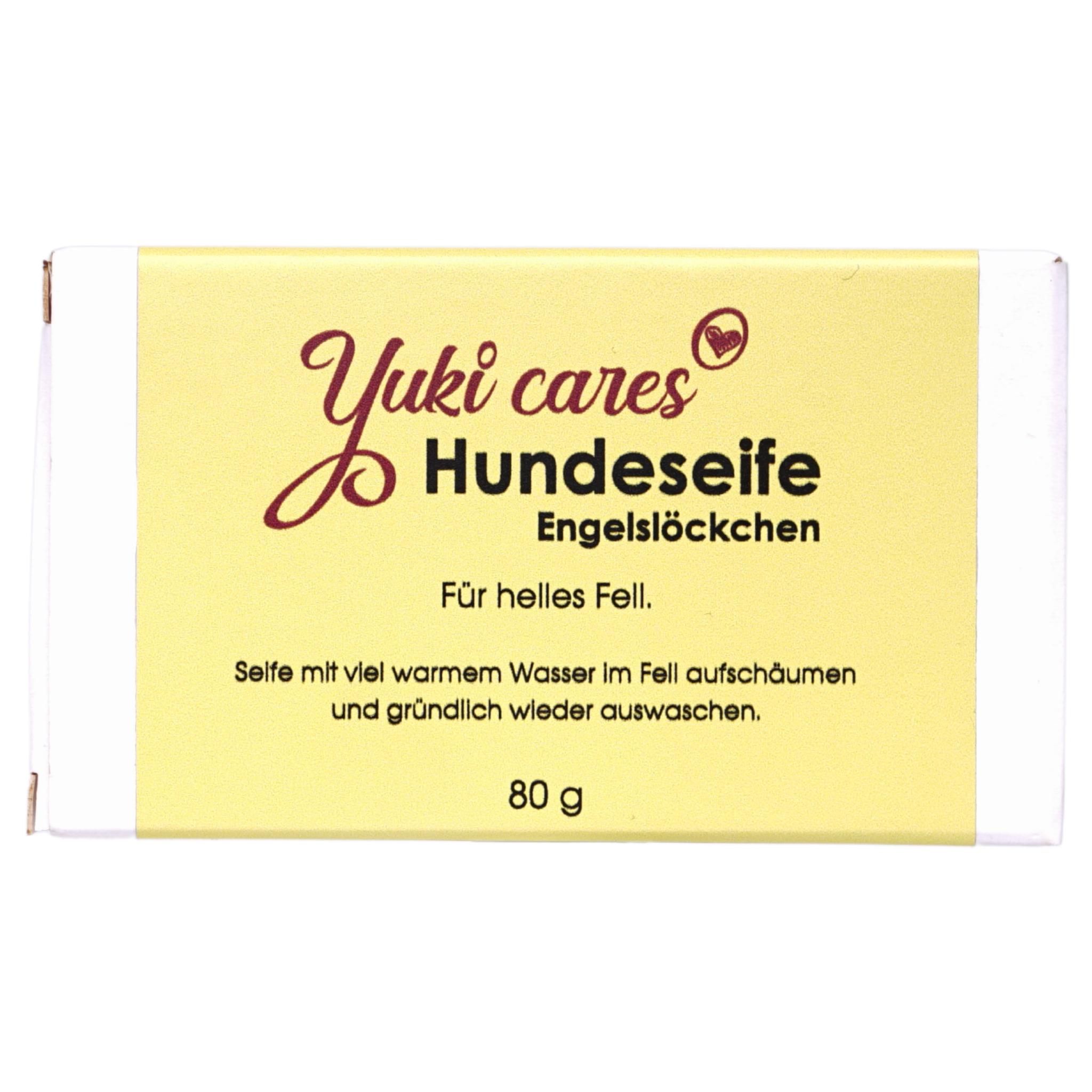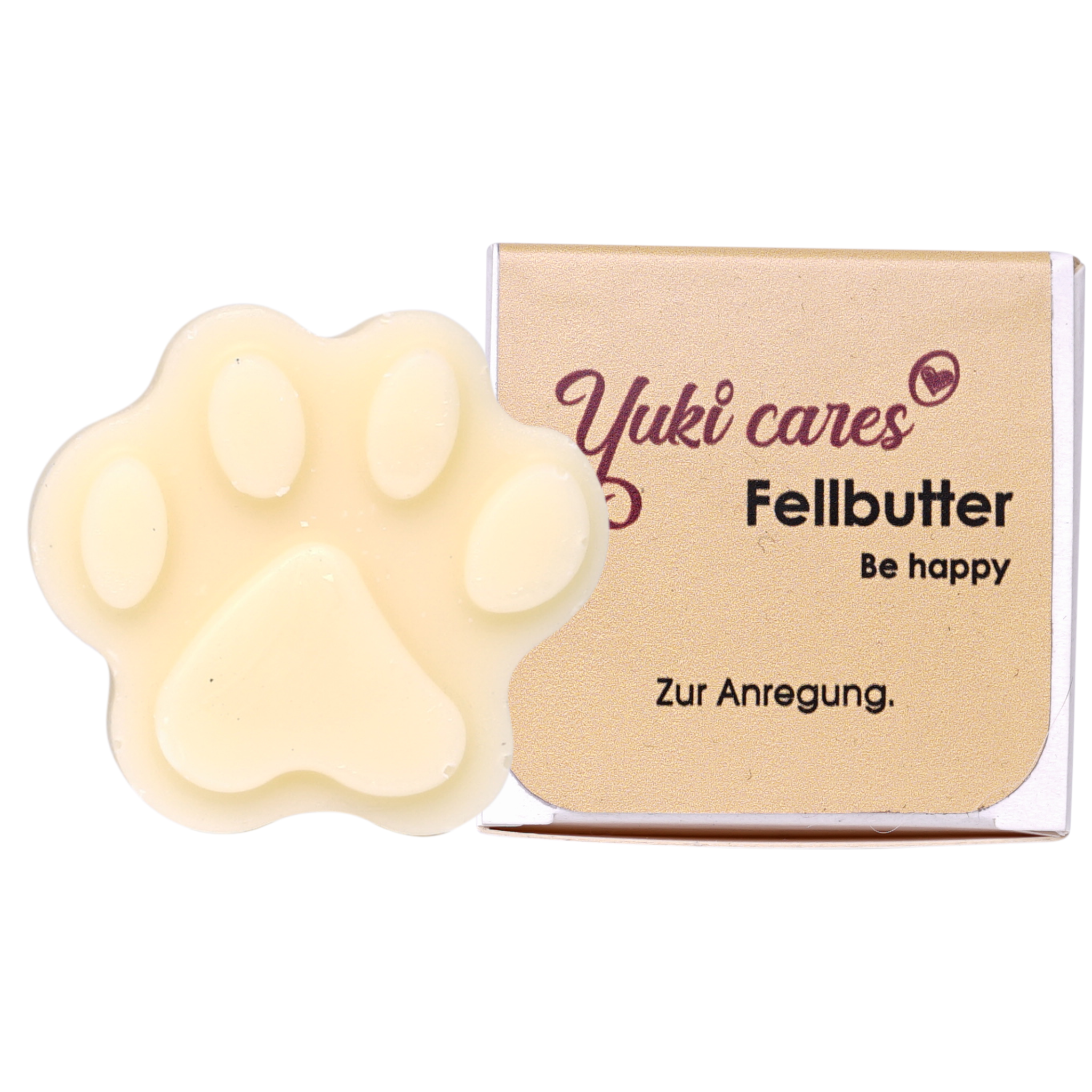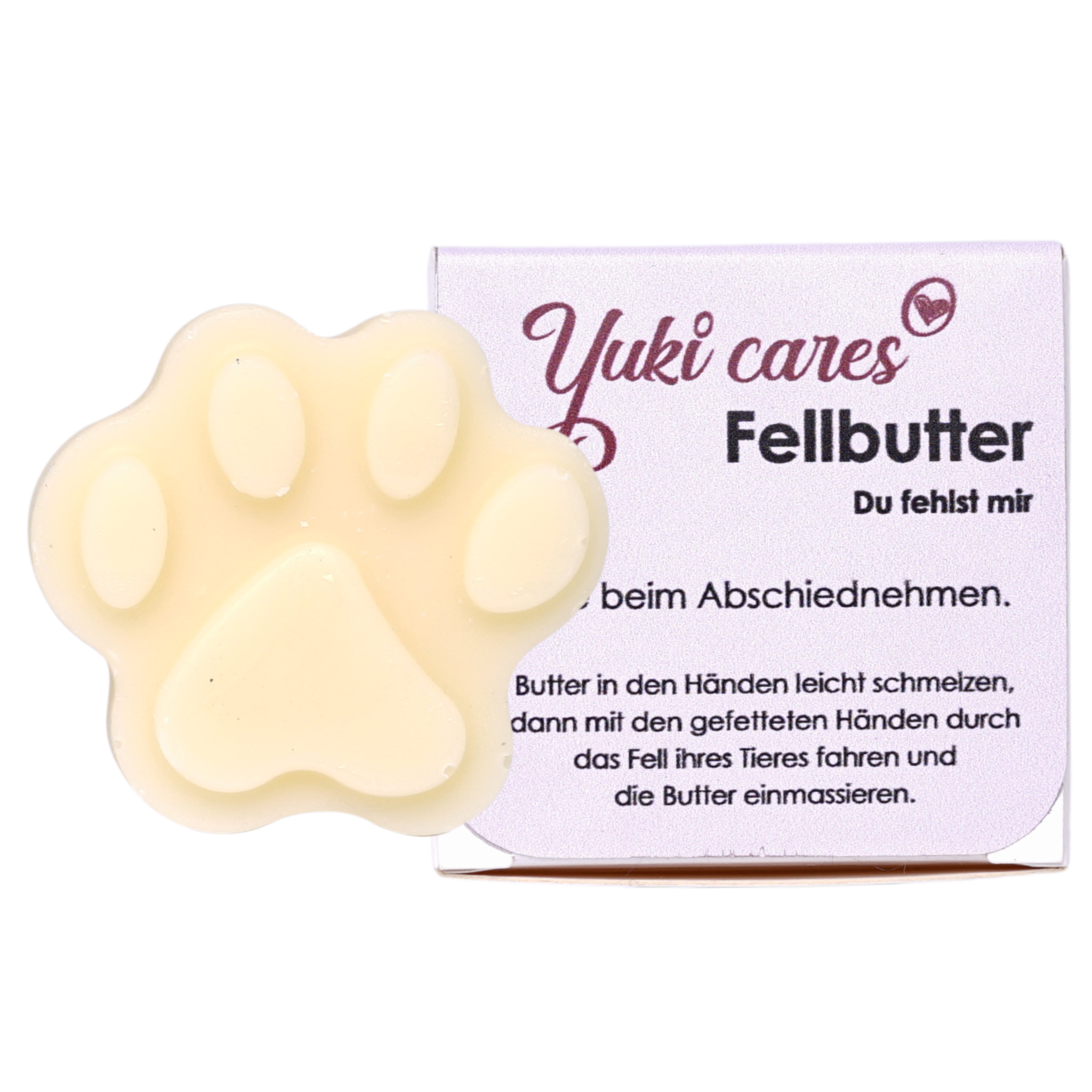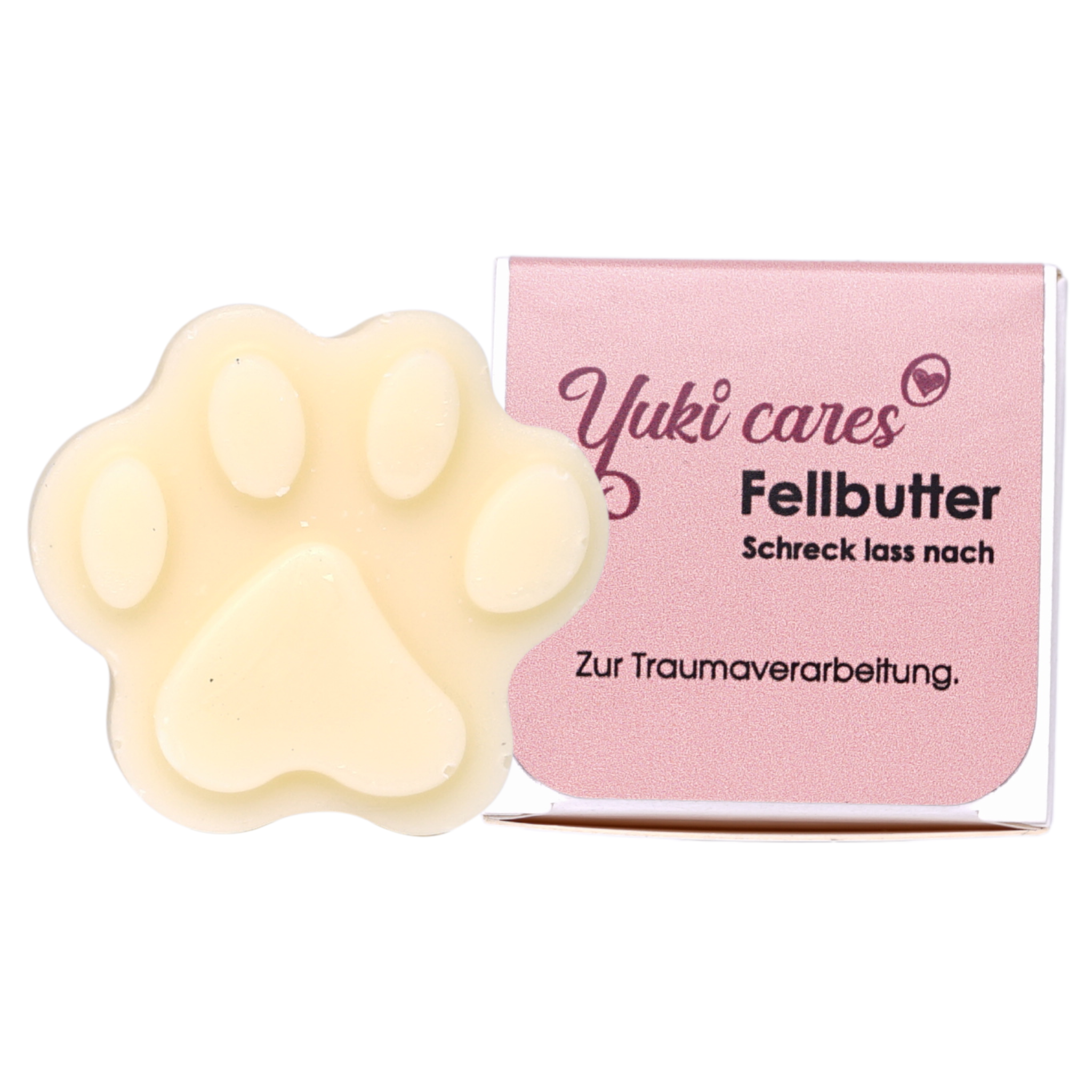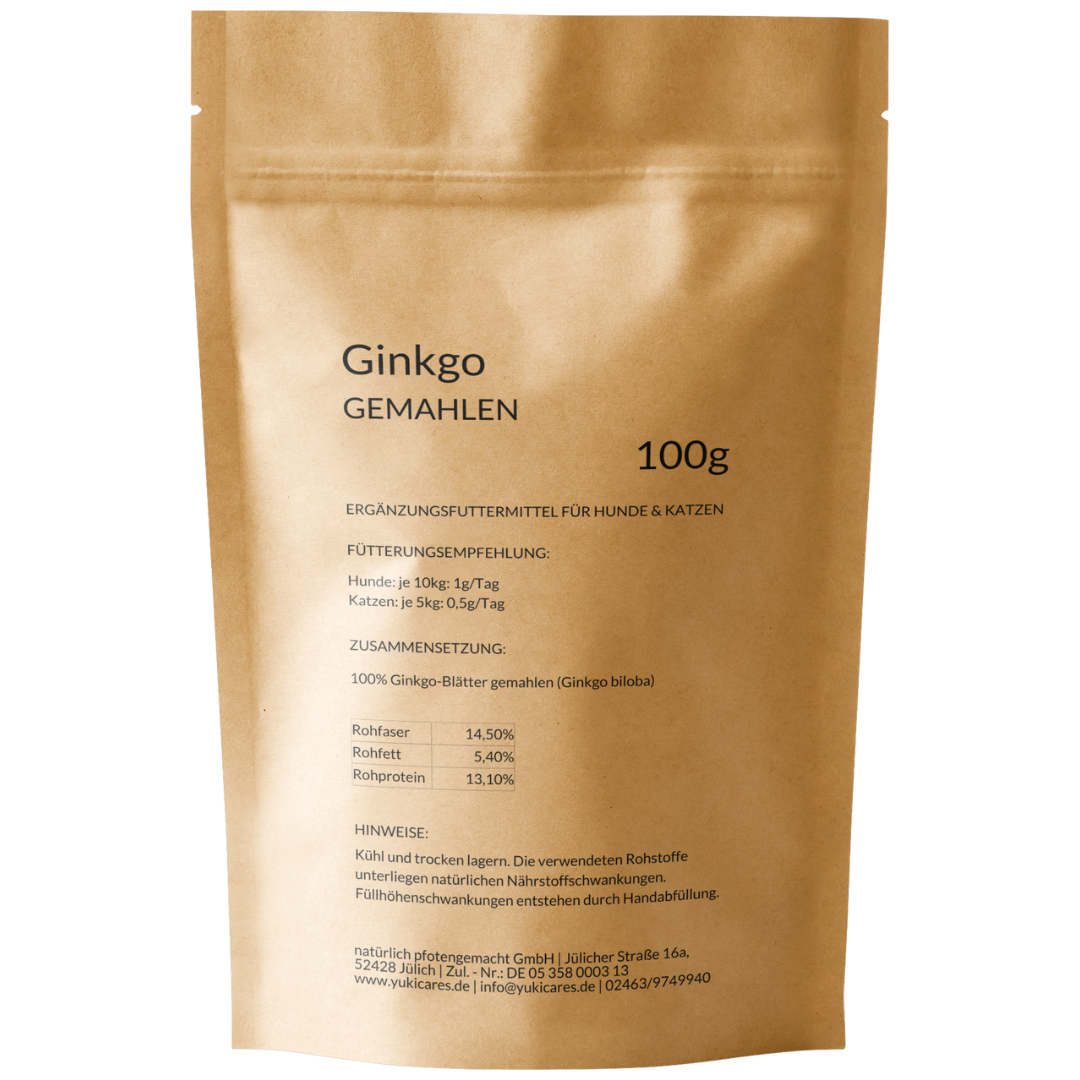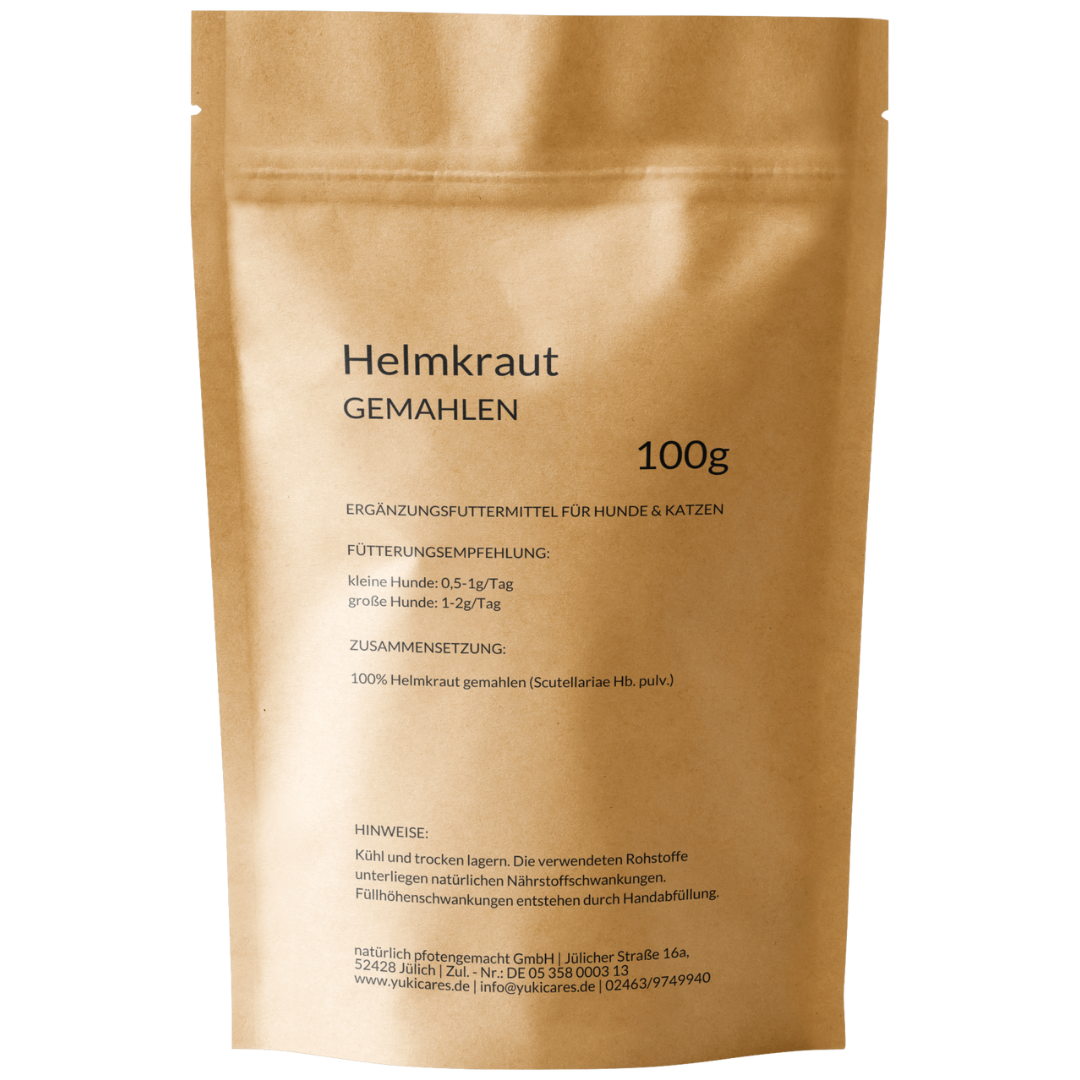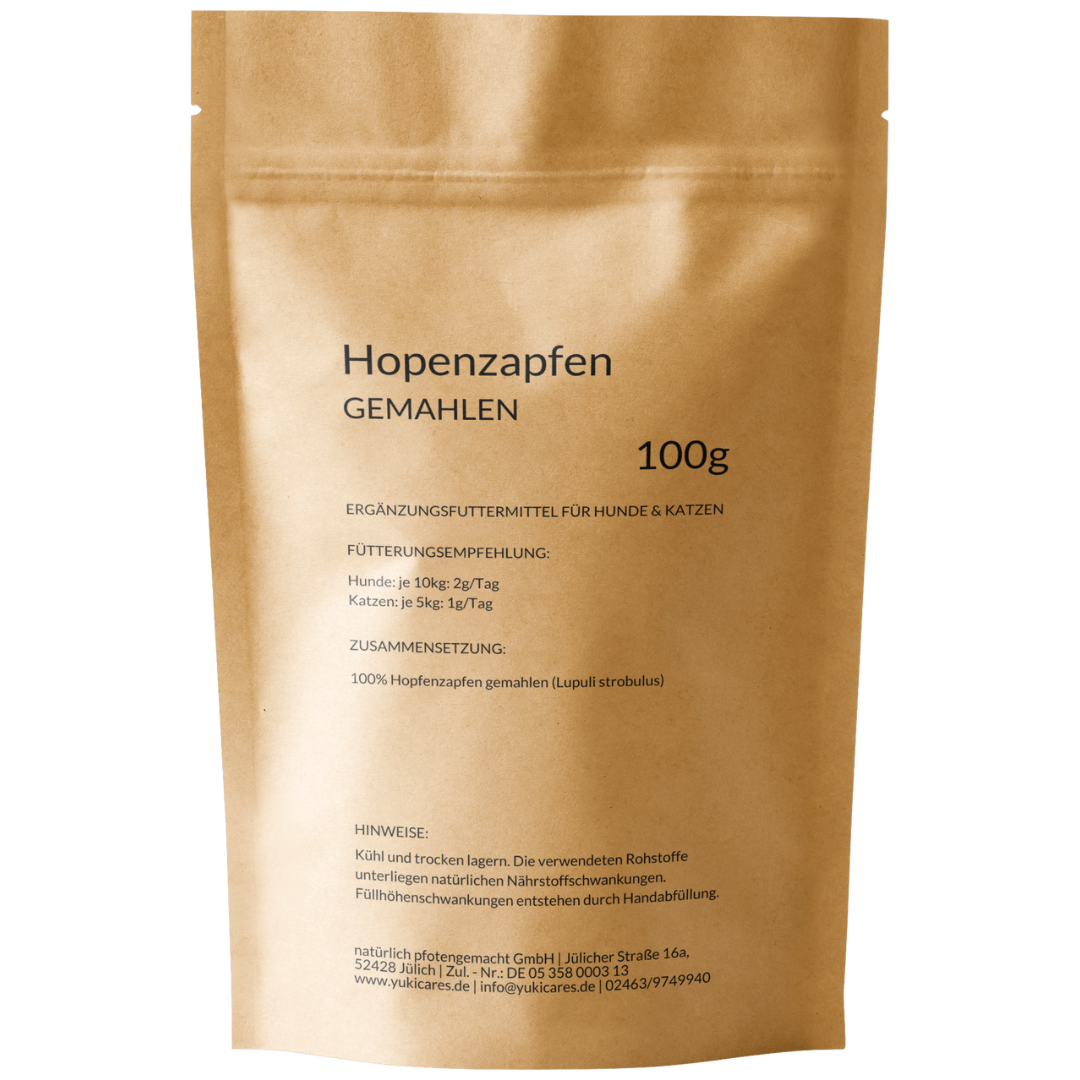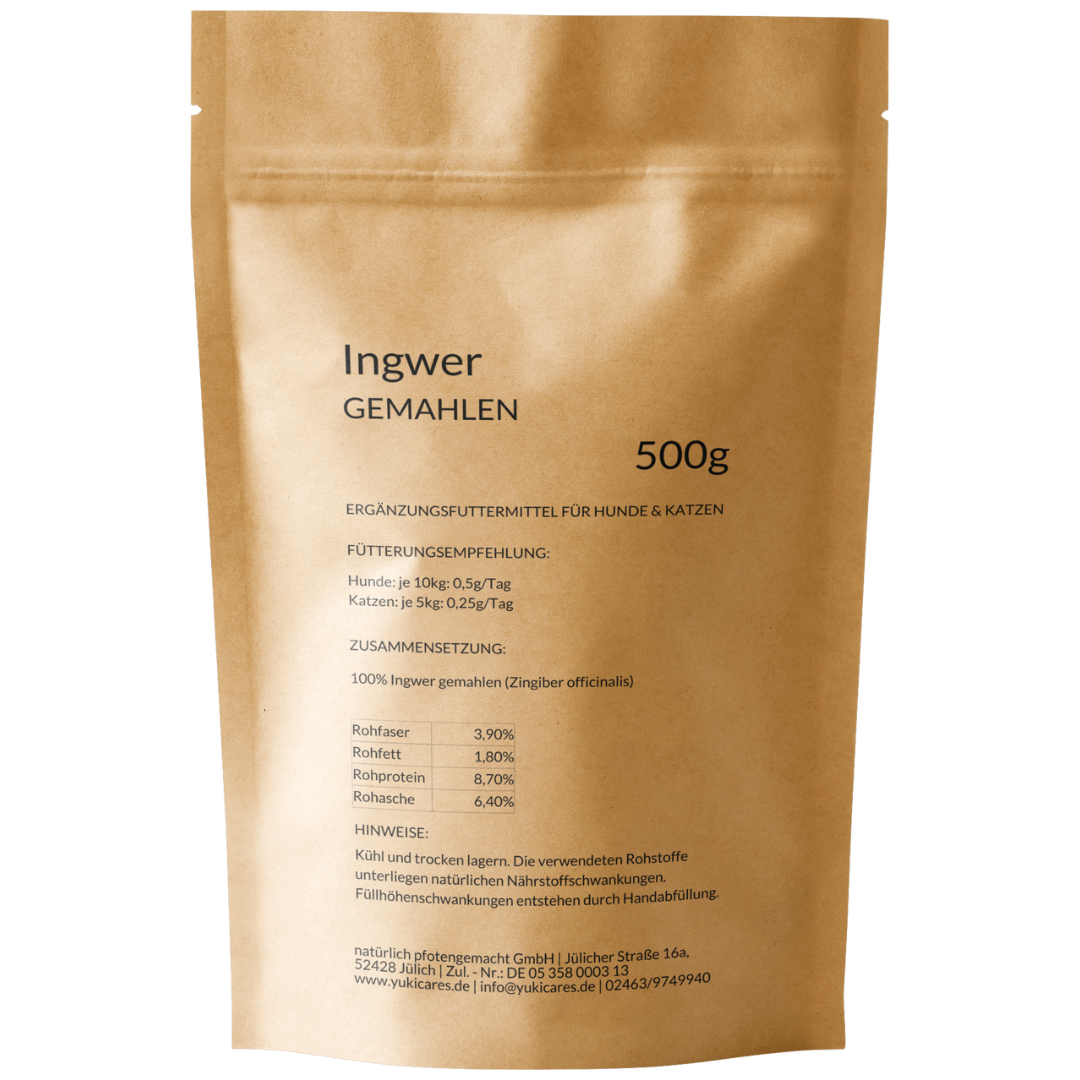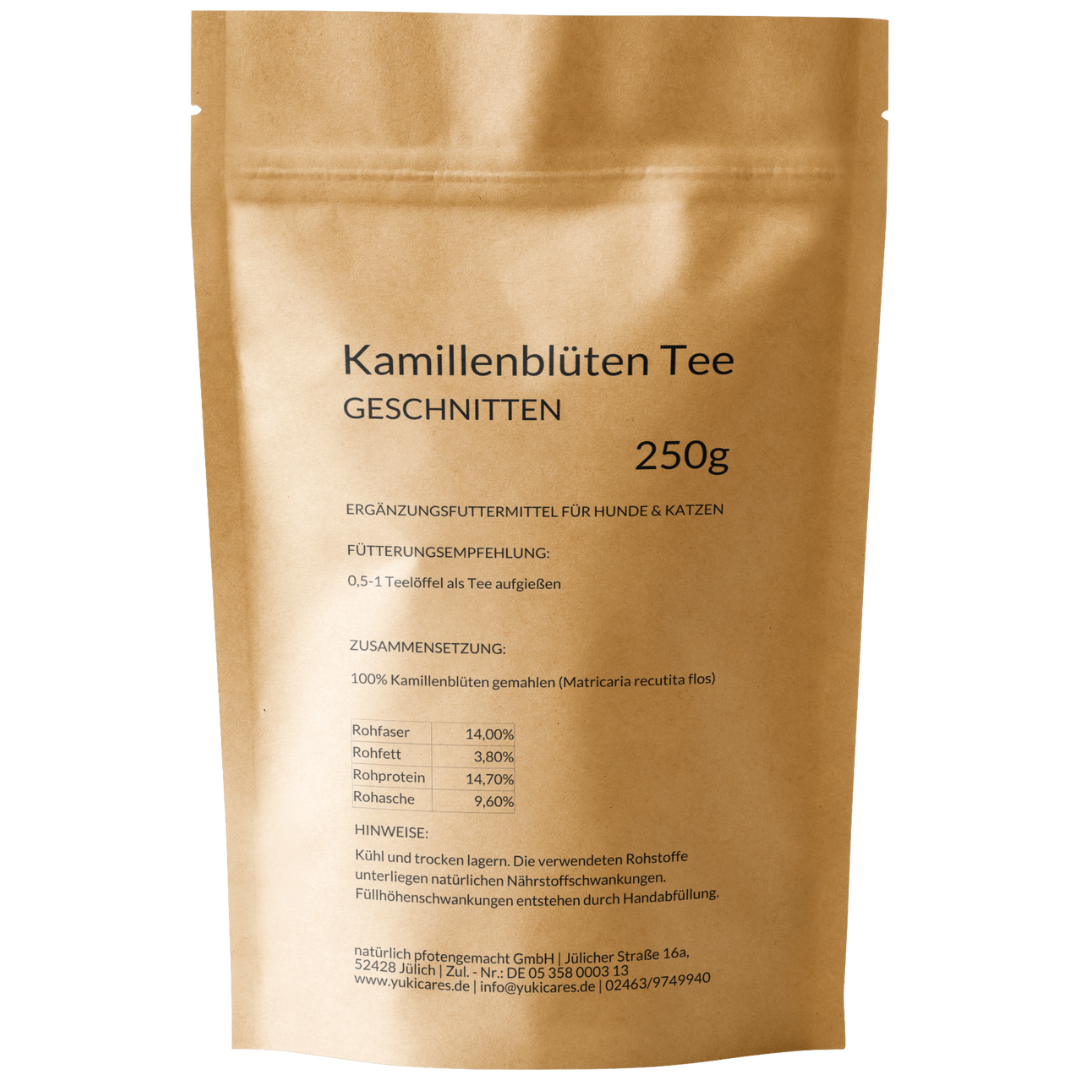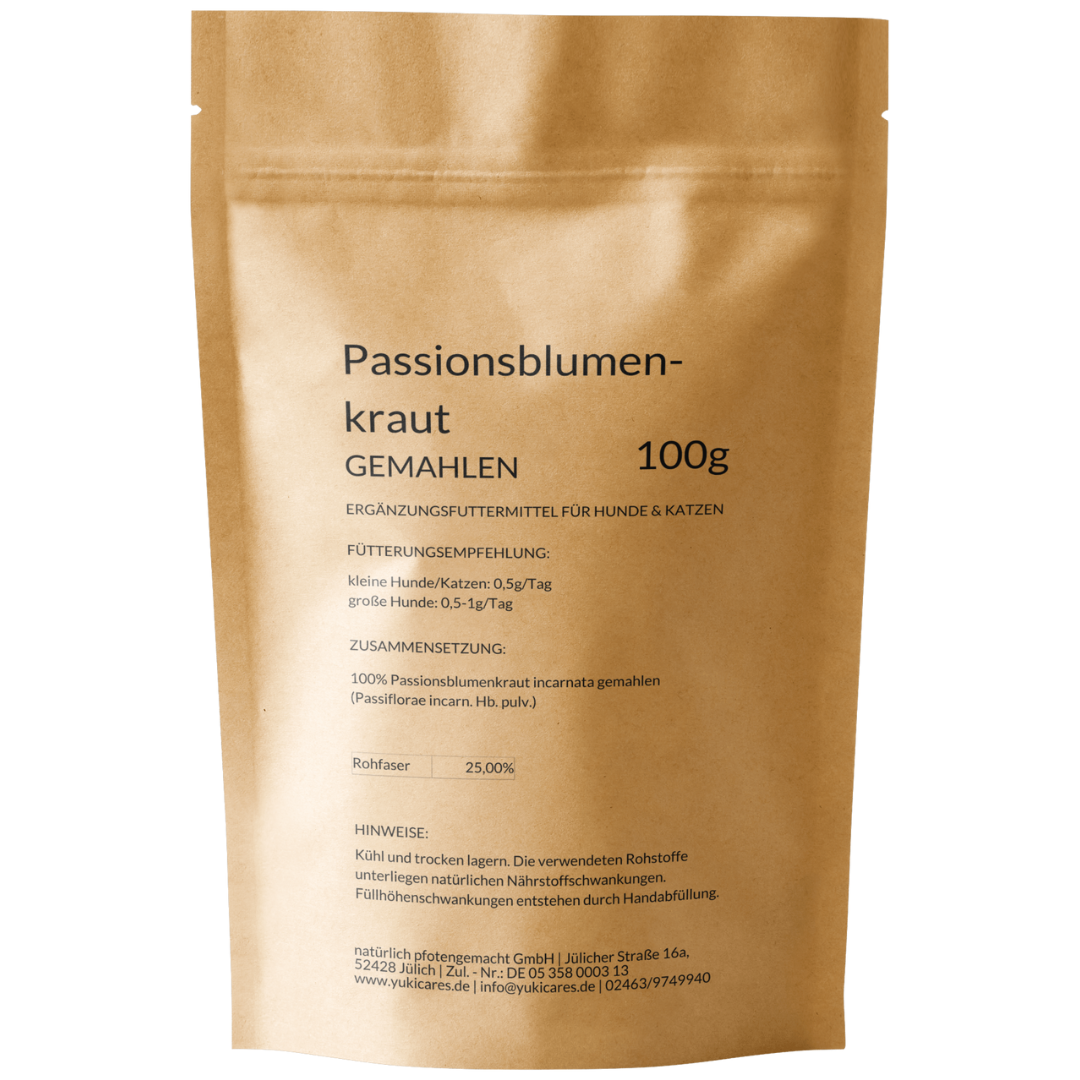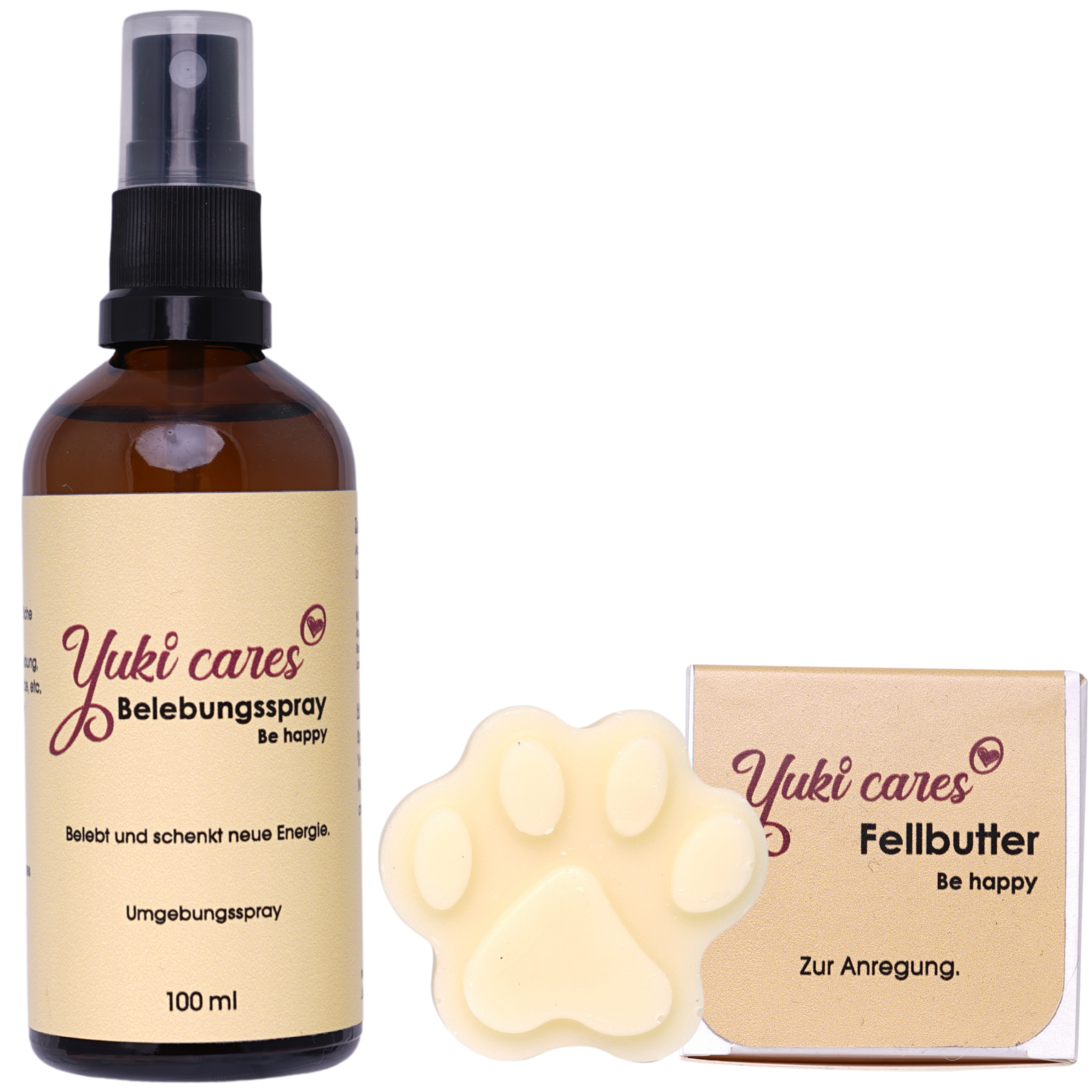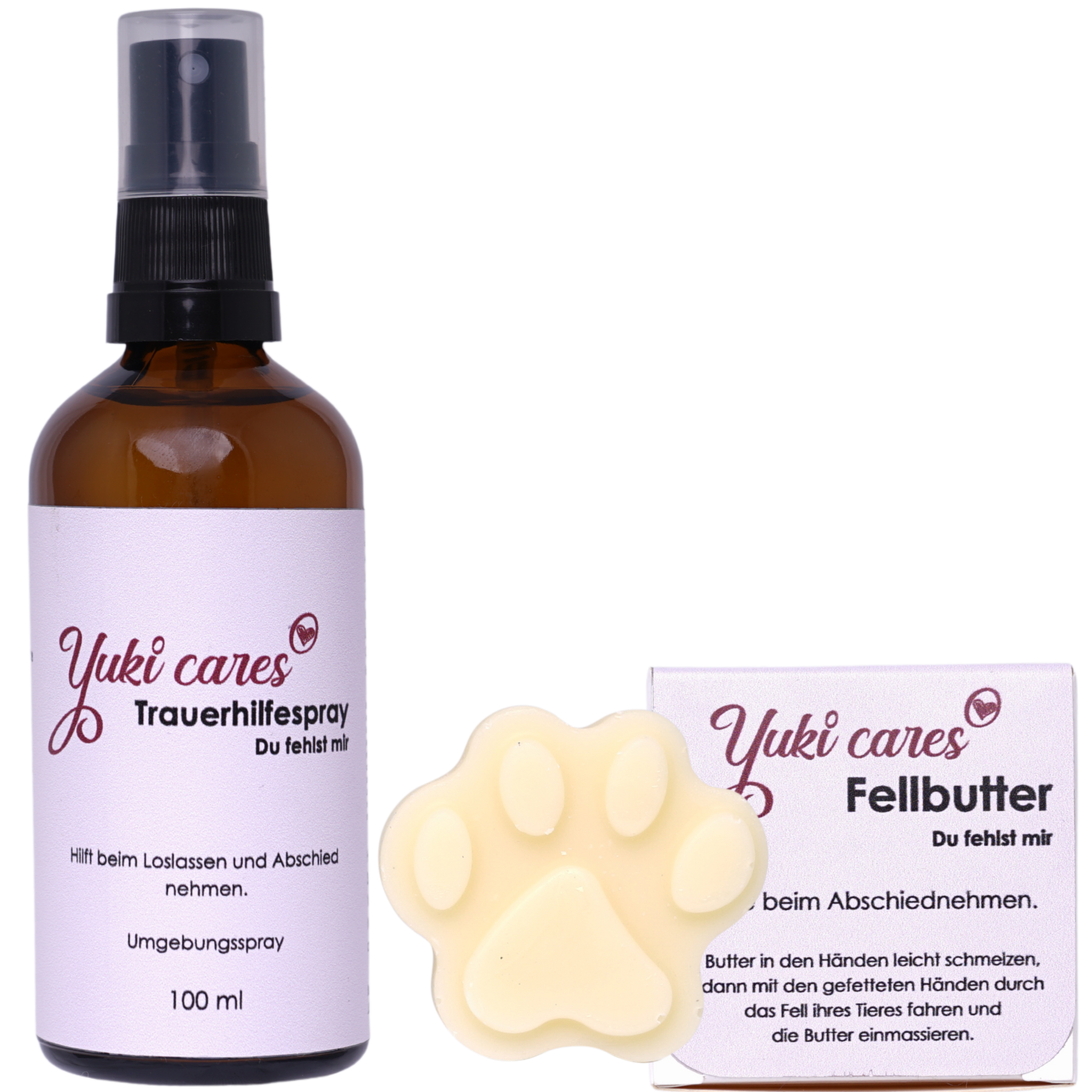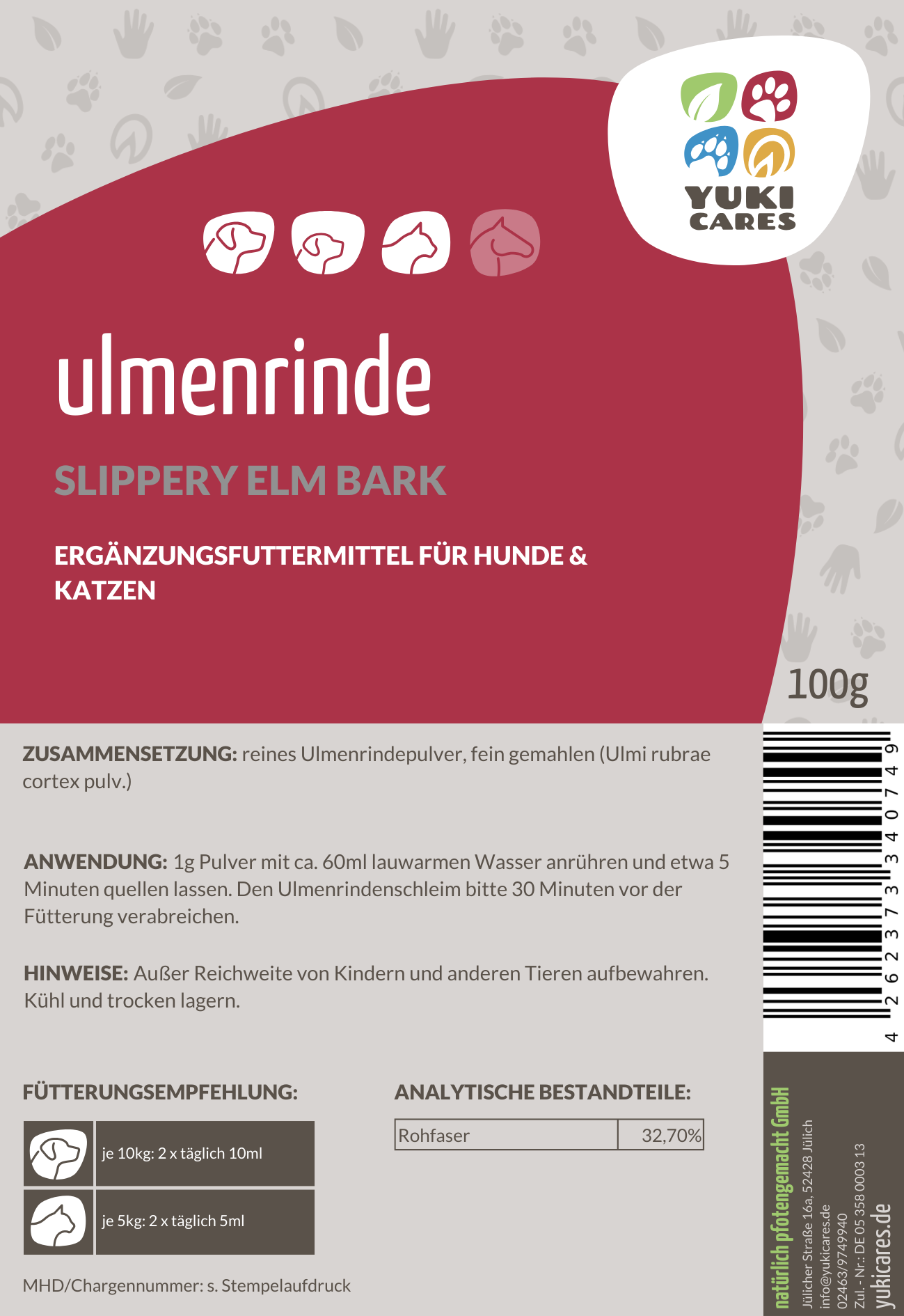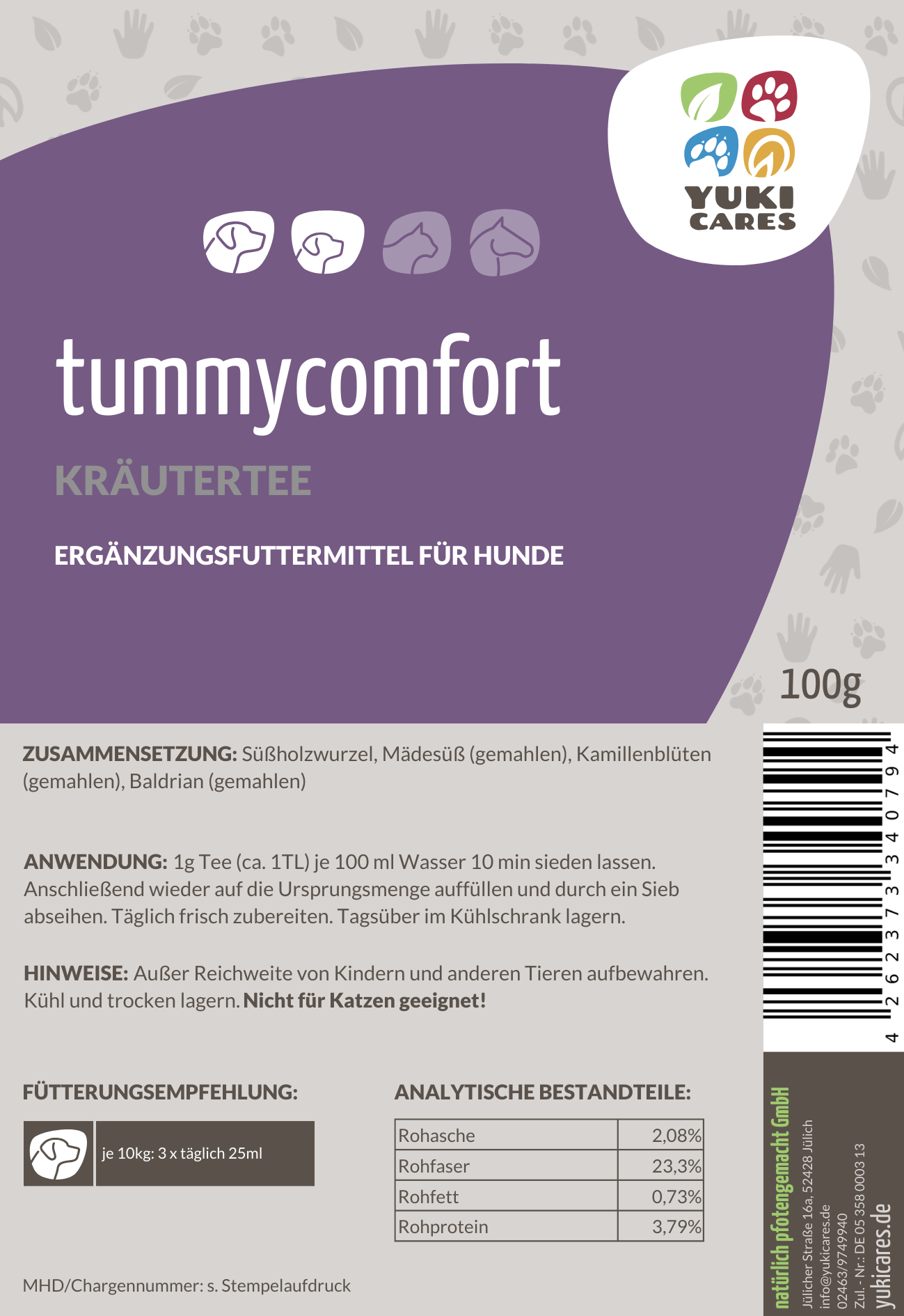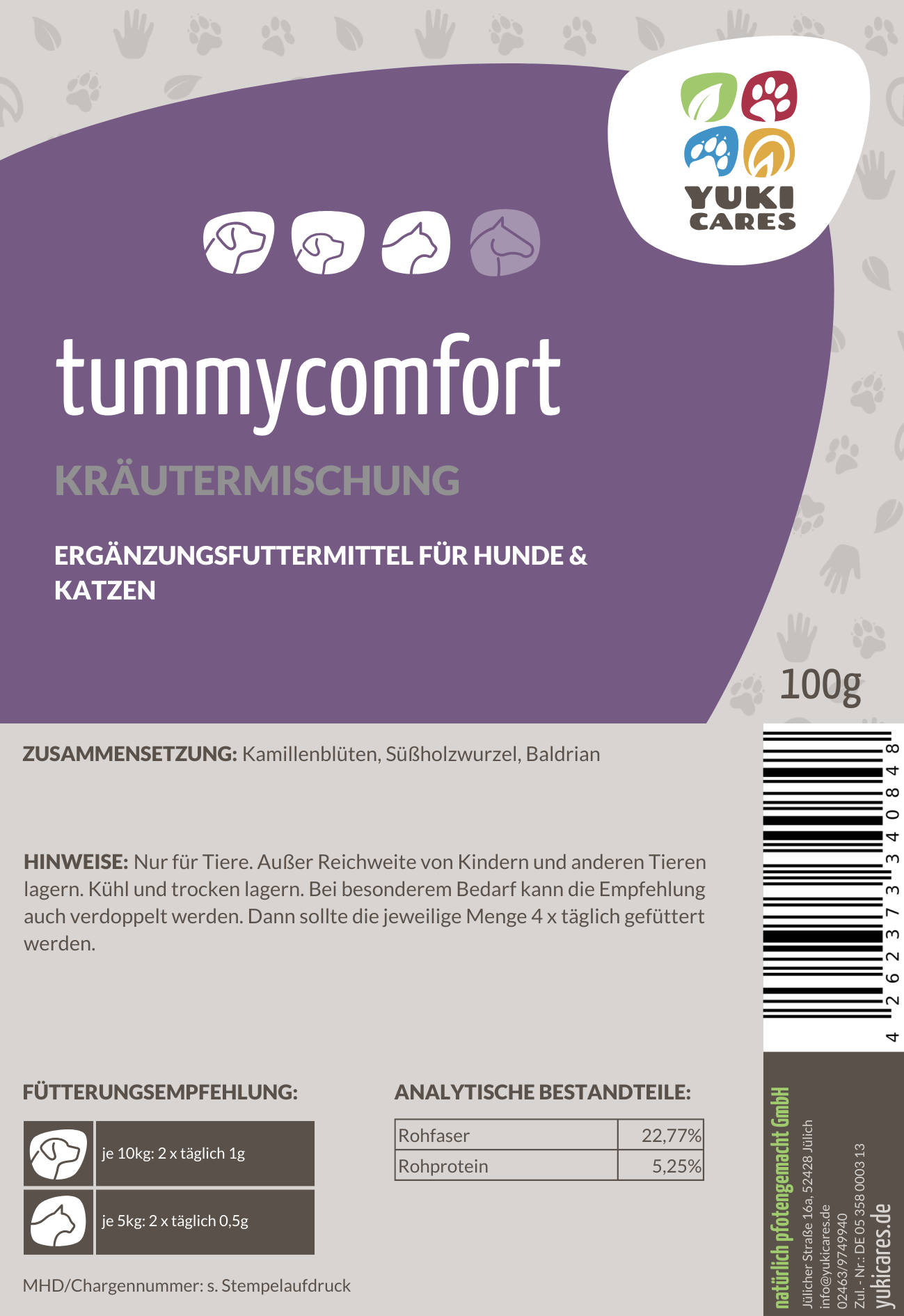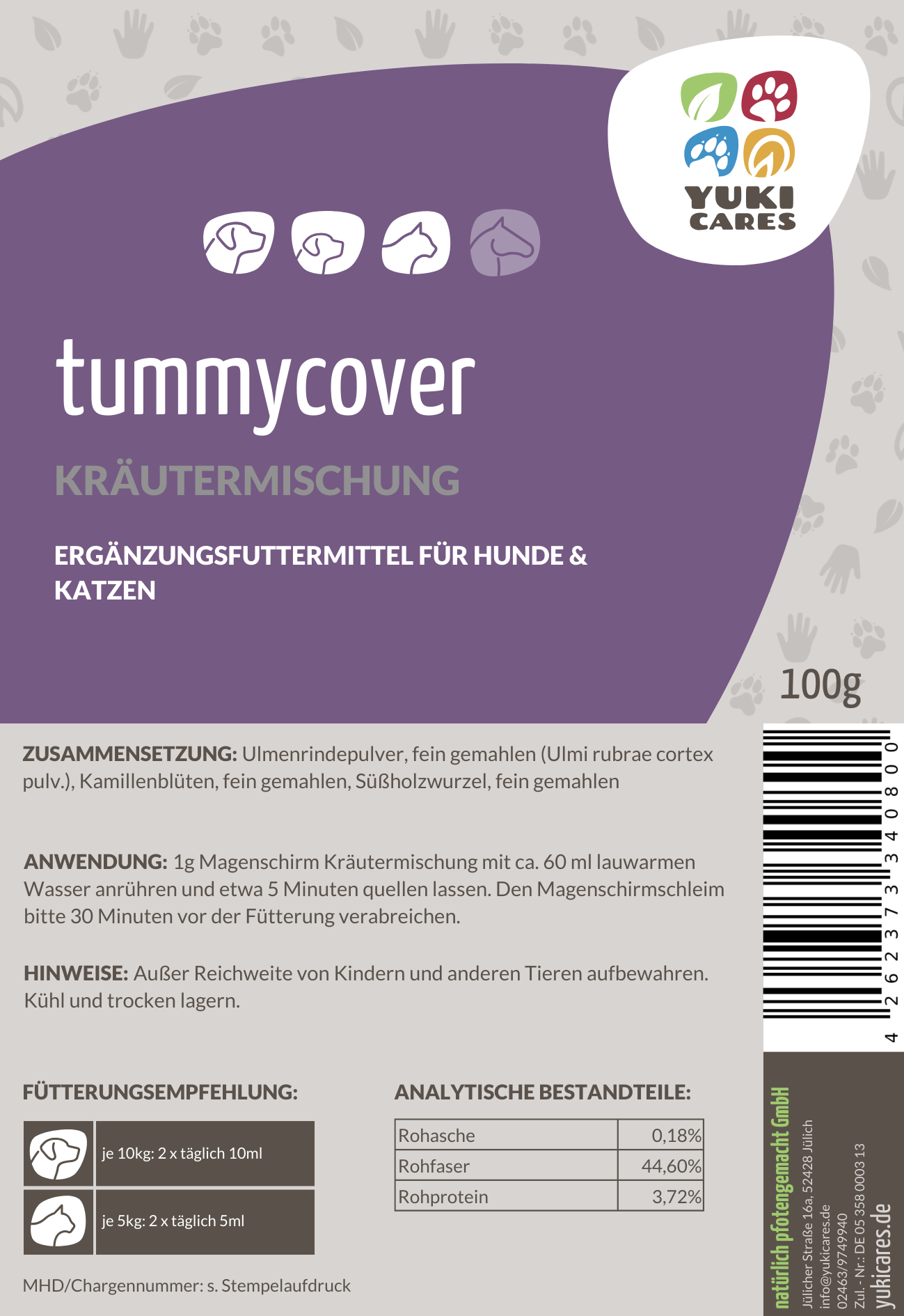Living with your beloved furry friend is a joy. Of course, there are also serious aspects to this relationship. Two important topics are training and emergency situations. Today we're addressing the topic of "First Aid for Dogs."
Need help quickly? Then jump to your topic here:
Insect bite (bee, wasp, etc.)
Diarrhea
Oak processionary moth
epilepsy
Vomit
Suffocation
Fever
Flea infestation
Giardia
cardiac arrest
cut injury
Swallowing foreign bodies
poisoning
Tick bite
First aid courses
General
Regardless of the trigger for an emergency situation, both parties are in an exceptional situation. You can manage your insecurity and nervousness through preparation and routine. Above all, you should convey security and trust to your dog. The necessary actions must be carried out calmly and as calmly as possible.
Your dog may be in pain, scared, and unable to cope with the sudden physical discomfort. Depending on their personality and age, your four-legged friend will react differently. Some will squeak, whine, or scream. Sometimes they want to flee or hide. Often they will snap at you, even though you're only trying to help them.
Keep calm and don't get impatient. Try to conduct the first treatment with gentle consistency. Don't get angry if your pet is uncooperative. Your dog doesn't understand what's going on and is reacting instinctively. His behavior isn't directed at you.
Dog pharmacy
To be prepared for first aid for your dog, you should have a well-stocked first aid kit. Having everything you need at hand will help reduce your anxiety. Check your inventory regularly to see if it's up to date.
Basics
Of course, you should have all important phone numbers readily available. Tedious searches waste valuable time and increase your anxiety.
- Vaccination certificate/International pet passport
- Veterinarian's phone number
- Practice replacement for vacation or illness
- Telephone number of the nearest veterinary clinic
- Animal rescue telephone number
The basic equipment includes:
- Tweezers*
- Tick tweezers*
- Fever thermometer*
- Disposable syringe (without needle)*
- Dog leash*
- Dog muzzle*
- Bandage scissors*
- Flashlight*
- Claw clippers*
- Disposable gloves*
Medications
If your dog has pre-existing medical conditions, these medications should also be included in the emergency kit. Homeopathic remedies can be added to the kit. Otherwise, only preparations for initial treatment are necessary.
- Charcoal tablets*
- colloidal silver* (disinfection & rinsing of wounds/eyes/nose)
- Skin Repair Lotion*
- Ear cleaner*
You can find a basic range of suitable Yuki cares products, which you can then expand as you wish, here* .
Bandages
- Bandage wadding or padding wadding*
- Gauze bandages* / self-adhesive bandages*
- Gauze compresses*
- Gauze swab*
- adhesive plaster*
- waterproof adhesive tape*
First aid courses for dogs
Many dog lovers have little experience in dealing with animal emergency situations. This is especially critical when it comes to their own dog. Numerous courses are offered to provide dog owners with peace of mind. The German Red Cross (DRK) and the German Rescue Service (ASB) also offer courses for dog owners.
The combination of theory and practice among like-minded people is particularly beneficial for learning. You can exchange ideas with other course participants, and your questions will be expertly answered by DRK/ASB staff.
The goal of these courses offered by the German Red Cross (DRK) and the ASB (Association of German Rescuers) is to enable dog owners to provide first aid for their own dogs. You can also administer treatment yourself in minor emergencies, saving your furry friend the inconvenience of driving or visiting the vet.
There are also many veterinary practices or animal health practitioners that offer first aid courses; just ask in your area.
When is it important to provide first aid to a dog?
Below, some emergency situations are listed in alphabetical order. This will help you more easily identify the symptoms and possible help for your dog.
Bee sting/wasp sting
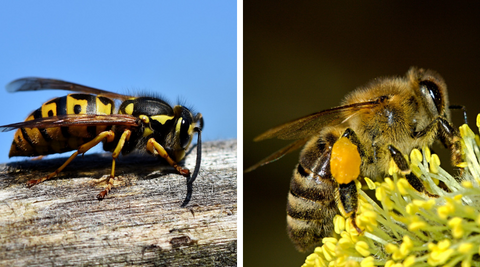 An insect sting (bee, wasp, hornet, bumblebee) usually affects either the paw area or the mouth, nose, and throat. Near nests (beehives, burrows), other parts of the body can also be injured by multiple stings.
An insect sting (bee, wasp, hornet, bumblebee) usually affects either the paw area or the mouth, nose, and throat. Near nests (beehives, burrows), other parts of the body can also be injured by multiple stings.
Paw area
Your dog will first yelp and then try to relieve the pain by licking his paw. If your dog continues walking, he will limp on the affected paw. Swelling will appear around the puncture site. You can tell which paw is affected by his behavior.
Try to calm your dog and examine the affected paw. With a bee sting, the stinger is still in the flesh (pad, toe). Carefully remove it with tweezers. Other insects (wasps, hornets, bumblebees) don't leave a stinger. However, with pads, you can see the sting site.
Give your dog relief. Firstly, the aim is to reduce the pain, and secondly, to stop or reduce the swelling. Cold water or ice cubes are suitable for cooling. If the accident happens at home, you can hold your pet's paw under the garden shower or the bathroom shower. The cold running water provides quick relief. The ice cubes should be wrapped around the paw in a thin towel. Half an onion (do not let the dog eat it) or a few drops of vinegar are suitable home remedies for insect bites on dogs. Our insect stick also quickly relieves pain and itching and disinfects the bite.
Cooling yourself is a bit more difficult when you're on the go. Depending on your surroundings, you might have running water available. If you're having a picnic, you'll probably have cold drinks with you. Use this liquid to keep you cool. A cooler box has ice packs. They're ideal for cooling yourself when used with a tea towel, T-shirt, or towel. After this quick intervention, the insect bite problem in that area of the body is quickly resolved.
Mouth, nose, throat
This area is especially sensitive, so your dog's reaction will be more severe. The swelling, in particular, can become life-threatening. Breathing may be restricted if the swelling is severe.
First, try to remove any stings. The next important step is cooling. If the sting is external (lips, bridge of the nose, nose), cool the area with cold packs, ice cubes, or something similar. Holding the muzzle under running water is possible for some dogs. Immediately apply a cloth soaked in colloidal silver water* to the sting to prevent swelling.
If the insect bit internally, cooling is necessary from two sides. The internal area can also be cooled with ice cubes or ice cream. Strictly speaking, the dog should chew on the ice cubes or ice and may swallow them. The most important thing here is to stop and reduce swelling. External cooling of the throat area can be extended to the neck (trachea).
However, if breathing isn't restricted by the swelling or if it returns to normal, you shouldn't just continue with your daily routine. A visit to the vet is recommended for this sensitive area. If breathing remains restricted, be sure to see a veterinarian. Continue cooling and monitoring breathing during transport.
Insect bites all over the body
With this degree of sting, swelling is life-threatening. In the worst case, anaphylactic shock can occur.
- Severely swollen areas
- Vomit
- Diarrhea
- Circulatory problems
- breathing difficulties
- state of shock
In this case, immediate transport to a veterinary practice or animal clinic is necessary. Call the practice or clinic and describe the symptoms. Immediately arrange for a second person to help carry the animal and monitor vital signs during the journey.
Diarrhea
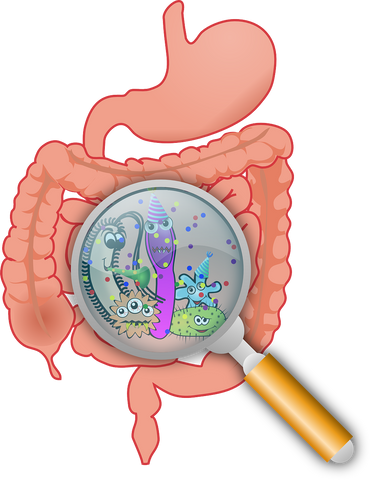 As a dog owner, you're probably familiar with diarrhea or "diarrhea." Sometimes it's psychological, or your four-legged friend has eaten something wrong or unusual. Usually, this problem goes away the next day. If the diarrhea lasts longer, you should observe your dog while out for a walk. You should pay particular attention to this during puppyhood.
As a dog owner, you're probably familiar with diarrhea or "diarrhea." Sometimes it's psychological, or your four-legged friend has eaten something wrong or unusual. Usually, this problem goes away the next day. If the diarrhea lasts longer, you should observe your dog while out for a walk. You should pay particular attention to this during puppyhood.
The appearance of the stool can vary:
- Normal color as usual, only thinner
- dark brown, black, reddish
- slimy, streaked with blood
- thin as water
Additional symptoms:
- Flatulence
- abdominal cramps
- Farting when defecating
- frequent defecation
- no appetite
- Weight loss
- No weight gain (puppies)
You know your dog and are sure it's just normal diarrhea. You can quickly relieve it with Moro's carrot soup . Other home remedies include charcoal tablets. Raw sauerkraut (rinsed thoroughly beforehand) can also be used for diarrhea. A day of a zero diet followed by carrot soup and cooked chicken will help your pet's intestines. During this time, he should always drink plenty of water. You can also always ask a nutritionist for help.
If this isn't normal diarrhea (it looks unusual) and other accompanying symptoms occur, you should definitely visit your vet. Be sure to bring a stool sample for testing.
Oak processionary moth
 Oak processionary moths are butterfly caterpillars. These moth caterpillars look pretty. But their stinging hairs can be dangerous to humans and animals. You can recognize them by their peculiarity: They always move in a line. They cross paths and roads, climbing trees one after the other, like a chain. The stinging hairs break off easily upon contact. The released protein (stinging venom) triggers allergic reactions. These caterpillars can also shoot out their stinging hairs. These hairs stick to the skin and fur with small barbs. Dogs and cats also ingest these hairs when grooming themselves.
Oak processionary moths are butterfly caterpillars. These moth caterpillars look pretty. But their stinging hairs can be dangerous to humans and animals. You can recognize them by their peculiarity: They always move in a line. They cross paths and roads, climbing trees one after the other, like a chain. The stinging hairs break off easily upon contact. The released protein (stinging venom) triggers allergic reactions. These caterpillars can also shoot out their stinging hairs. These hairs stick to the skin and fur with small barbs. Dogs and cats also ingest these hairs when grooming themselves.
If it comes into contact with the skin, the following symptoms may occur:
- itching
- Redness
- hives
- Pustules
- nodules
When inhaled, the mucous membranes of the mouth and nose are affected and the respiratory tract is irritated.
In addition, the following symptoms may occur:
- Circulatory problems
- Fever
- fatigue
- Eye irritation
- Swelling of eyelids and lips
If your dog has come into contact with oak processionary moths, you should rinse their nose, mouth, and eyes with water. If you're out and about, send your dog to the nearest body of water for a swim. At home, you must clean your four-legged friend thoroughly with a dog soap, such as our Stinkerchen* with deactivating activated carbon. Take care to protect yourself. Wear gloves and a face mask during the procedure.
If your dog doesn't show any symptoms after this washing procedure, everything is fine. If it does, please take him to the veterinarian.
Your dog may have eaten one of these caterpillars, so take it to the vet immediately. During the trip, you should pay attention to its breathing. In the worst case, an allergic shock could occur.
epilepsy
Epilepsy in dogs can have two causes. This defect is either congenital or triggered by another disease. Most seizures are not life-threatening. It only looks horrific to you. Your dog lies on the ground, its entire body tensing. Its legs twitch in various directions. The dog is unresponsive. It may make some noises (yowling, screaming), but it is definitely not in pain. Such a seizure usually lasts a few seconds or minutes.
There's not much you can do for your furry friend at this stage. Prevent him from injuring himself through uncontrolled spasming. Pull him away from dangerous furniture by his hind legs and wrap him in a blanket. Never put anything in his mouth (between his teeth) or even place your hand in his mouth. In this unconscious state, he may bite uncontrollably, and his clenched jaws won't open as quickly.
If this seizure lasts more than 10 minutes or occurs at shorter intervals (1 to 2 hours), you should wrap your pet in a blanket and take it to the veterinarian. Once the seizures pass, normality usually returns. However, this condition requires veterinary care. Make an appointment and describe all symptoms to the vet. It would be helpful if you could take a short video during the seizure.
Vomit
Dogs vomit frequently. Usually, you don't need to worry. If the vomit is greenish and slimy, with grass stalks mixed in, you have a reason. Too many bones can also be the trigger. But then you can see the bone fragments wrapped in mucus. Another possibility is eating dry food too quickly. This can also trigger an upset stomach. This type of vomiting is a one-time occurrence, and you don't need to do anything. If this type of vomiting occurs frequently, you can seek help from a nutritionist; they specialize in precisely this.
It's different if there's blood in the vomit. Many possible triggers exist here, from poisoning to an injury to the throat or esophagus. Call your veterinarian and bring your dog in for an examination. Take a sample of the vomit with you. This can be helpful for diagnosis.
Suffocation
Every dog owner's nightmare: Your pet can't breathe. He's in danger of suffocating. His airways are blocked. This can be triggered by foreign objects blocking all airways. In some cases, the dog may already be unconscious. Your dog has "choked." Instead of passing through the esophagus to the stomach, the object (food, foreign body) has entered the windpipe, where it is blocking the oxygen supply.
To save your dog's life, you can and must use the Heimlich maneuver. The mechanical pressure on the chest (lungs) is intended to expel the foreign body from this area (lungs, trachea). This maneuver can cause internal injuries. If the maneuver is successful (the dog is breathing again), immediately seek veterinary attention. This maneuver originates from human medicine and should only be used on dogs in emergencies. Under no circumstances should it be attempted on a healthy animal.
Fever
If your dog has a fever, he'll have a dry nose and hot ears. He'll also pant heavily and refuse to eat. His entire body will feel warm.
Use a thermometer (anal) to determine the actual body temperature. A temperature between 37.5 and 39 degrees Celsius is normal. For puppies, the normal temperature is up to 39.5 degrees Celsius. The condition is life-threatening at 41 degrees Celsius, and at 42 degrees Celsius, the condition is life-threatening.
If your dog has a fever, he needs to drink plenty of fluids. If necessary, force-feed him. Try to reduce the fever. Use cold compresses. Dip towels or washcloths in cold water and wring them out. Place them on his stomach, groin, and paw area. Repeat this process over and over again.
If you cannot reduce the fever or it even rises to life-threatening levels, your dog must be taken to a veterinary clinic immediately for treatment.
Flea infestation
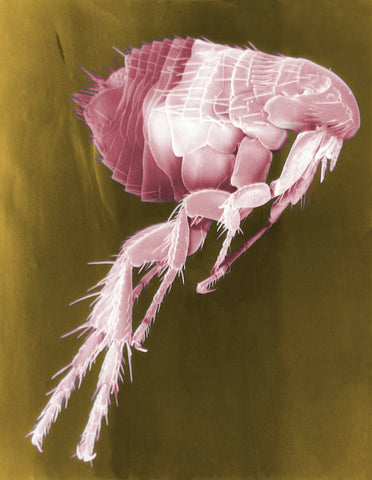 Most tick collars and spot-on treatments are also effective against fleas. Despite all precautions, your pet can still become infected with fleas. Fleas cause intense itching. Increased scratching leads to sores, inflammation, and hair loss. You can confirm the presence of fleas with a flea comb. When you comb through the fur, the flea droppings will be trapped in the comb. Shake the contents of the comb onto a damp white piece of paper. The droppings will run and leave reddish marks.
Most tick collars and spot-on treatments are also effective against fleas. Despite all precautions, your pet can still become infected with fleas. Fleas cause intense itching. Increased scratching leads to sores, inflammation, and hair loss. You can confirm the presence of fleas with a flea comb. When you comb through the fur, the flea droppings will be trapped in the comb. Shake the contents of the comb onto a damp white piece of paper. The droppings will run and leave reddish marks.
Now you need to act immediately. First, your dog will be treated with a special flea treatment. Natural remedies include diatomaceous earth and coconut oil, the latter of which we have already covered in this article . This treatment can last several months (2 to 4). During this period, the reproductive cycle is interrupted. At the same time, all of the dog's resting places must be treated. Regular vacuuming and wet mopping will further support this process.
Giardia
Giardia are microorganisms that live as parasites in the small intestine of their host. Puppies and older dogs with compromised immune systems are particularly susceptible.
The symptoms are as follows:
- frequent diarrhea
- Appearance between slimy and yellow-green
- Foul smelling, covered in foam, partly bloody
If you suspect this, you should have a stool sample examined. Further treatment will be determined by the veterinary medication. You need to optimize hygiene on the dog ( dog soap, disinfectant ) and in the environment. You must prevent infection in other housemates (humans and animals). To combat diarrhea as a symptom, Moro's carrot soup can help. During and after treatment, it is essential to rebuild the intestines to prevent reinfection with parasites and other pathogenic germs and to prevent allergies. A canine nutritionist can also help you with this.
cardiac arrest
Cardiac arrest is usually preceded by circulatory problems or shock. An accident, severe blood loss, electric shock, or heat stroke are also possible. The mucous membranes are pale, and your dog is unresponsive. He shows no reaction, either to touch or to direct communication.
If your dog is unconscious, he must be placed in the recovery position. Choose the right side of the dog. The mouth should be open and the tongue should hang out to the side. You should stretch the head and pull the limbs (front and hind legs) apart. Check vital signs (respiration, pulse). It's best to place your dog on a blanket (for carrying and transport). Also, put a leash on him for safety.
You can tell if your dog is breathing by the rise and fall of their chest. Between 30 and 50 breaths per minute are normal. You can measure their pulse on the inner thigh. It is clearly felt in the middle of this area. A normal pulse rate is between 80 and 120 beats per minute. If you can't detect any breathing, your dog is in cardiac arrest.
In this situation, immediate resuscitation is necessary. First, cardiopulmonary resuscitation must be performed. This is performed at a ratio of 2:20 at a rate of 80 to 120 breaths per minute. Second, mouth-to-nose resuscitation is necessary. Close your dog's mouth with your hands. No air should be able to escape. Now blow air directly into the dog's nose. You should maintain a rate of 20 to 30 breaths per minute. Interrupt your activity occasionally and check whether the chest is rising and falling again.
If your dog is breathing again, he should be taken immediately for examination (at a doctor's office or clinic). At least two people should be present during transport: the driver of the car and the person who will care for the dog during the journey and monitor its vital signs.
cut injury
Cuts can happen quickly. Sharp-edged stones, broken glass, or aluminum cans can cause cuts of varying depth. The paw area is usually affected. You may notice such an injury immediately through yelping (squeaking) and subsequent limping, or sometimes much later. If your dog is romping with friends, accompanying a horseback ride, or participating in other sporting activities, he may not even notice the injury. Only when the euphoria wears off does his paw hurt, and he begins to lick it and limp.
Carefully examine his paw. Then wash it with colloidal silver* or saline solution. Carefully remove any small foreign objects (stones, glass shards) with tweezers. If your pet's paw is very hairy, carefully trim the fur short to prevent hairs from getting into the wound and disrupting the healing process. Then disinfect the wound; you can also do this with our silver aid. Now you can bandage the area. First, apply sufficient padding (including between the toes) and then apply a self-adhesive bandage around the paw. If it's a small cut and his vaccination status (tetanus) is complete, you don't necessarily need to see a vet. To be on the safe side, you can also put a dog boot on his paw. This will protect the bandage from moisture and dirt.
It's different if the wound is a deep, heavily bleeding cut. Try to stop the bleeding with a pressure bandage. Further treatment should be left to an experienced veterinarian. A local anesthetic or small stitches may be necessary.
Swallow
When your dog swallows objects, they usually go through the esophagus into the stomach and then into the intestinal tract. The more serious version of "choking" can be found under "choking." Choking is common in puppies, young dogs, and playful adult dogs.
Swallowing foreign bodies
 While playing, your dog may swallow small children's toys, small household items, or even jewelry. They chew on the objects, biting off smaller pieces and swallowing them. Smaller bones or pieces of wood may also find their way into the gastrointestinal tract unchewed. I've even found an entire tennis ball in a Labrador's stomach. Sometimes your dog will try to regurgitate the foreign object. Sometimes they succeed. But usually, it doesn't work.
While playing, your dog may swallow small children's toys, small household items, or even jewelry. They chew on the objects, biting off smaller pieces and swallowing them. Smaller bones or pieces of wood may also find their way into the gastrointestinal tract unchewed. I've even found an entire tennis ball in a Labrador's stomach. Sometimes your dog will try to regurgitate the foreign object. Sometimes they succeed. But usually, it doesn't work.
If no other problems arise (respiratory disturbances), you must help your dog expel the object naturally. Sauerkraut is particularly suitable for this. The long threads enclose the object in the intestine, preventing damage to the intestinal wall. Before you can give your dog sauerkraut, you must soak it well. Dogs don't like the acid. If your dog doesn't want to eat the vegetables, you can refine them. Quark, yogurt, cream, or similar are suitable for this. After that, you must wait. Within 24 to 48 hours, the undigested cabbage should leave the intestine naturally along with the object. Constantly check the stool when you go for a walk. Once the object is out, check the object to make sure it is intact. The procedure is certainly a bit disgusting, but effective. If no further symptoms occur (blood in the stool, vomiting with blood), the matter is resolved. A veterinary examination is necessary if the object does not leave the dog's body this way, or if there is a suspicion of injury to the intestinal tract.
poisoning
Playful and greedy dogs can easily poison themselves by eating the wrong foods (e.g., emptying the trash – garlic, onions, grapes). Dangerous foods include cleaning products, laundry detergents, nicotine, alcohol, poisonous dog bait, slug pellets, poisonous plants, or possibly a snake bite (less common).
Possible symptoms include:
- Circulatory problems (pale mucous membranes, rapid heartbeat)
- Paralysis symptoms
- Cramps
- Muscle tremors
- Vomiting (sometimes foamy)
- Diarrhea
If you notice symptoms of poisoning or your dog is even still playing with the packaging, it's important to act quickly. If the poisonous substance has just been ingested, give your dog activated charcoal for support. However, never use a muzzle or mouth loop in such situations. Vomiting could cause suffocation. Also, don't induce vomiting. The symptoms could worsen. If your dog faints, place him in the recovery position. Inform your veterinarian or animal hospital about the emergency and transport your dog there immediately. Take a sample of the poison with you. A sample of vomit, feces, or urine is also helpful.
Poisoning by poisonous plants
You will find sufficient information on this topic about poisonous plants (garden, house, nature), symptoms and countermeasures in the article “Poisonous plants for dogs” .



Chocolate poisoning
 Chocolate poisoning can be life-threatening for dogs. The active ingredient theobromine in chocolate causes hypernervousness and rapid heartbeat. This extreme nervous system activity can, in the worst case, lead to death. Even small amounts of chocolate can trigger this effect. There is no antidote for theobromine.
Chocolate poisoning can be life-threatening for dogs. The active ingredient theobromine in chocolate causes hypernervousness and rapid heartbeat. This extreme nervous system activity can, in the worst case, lead to death. Even small amounts of chocolate can trigger this effect. There is no antidote for theobromine.
In this acute emergency, you must take your dog to a clinic or veterinary practice as quickly as possible. Another option is animal rescue or the veterinary emergency service.
The attending physician will need the following information before your arrival:
- Which chocolate (the higher the cocoa content, the more dangerous)
- What quantity (remains of chocolate wrappers, candy bags)
- Weight of the dog
Tick bite
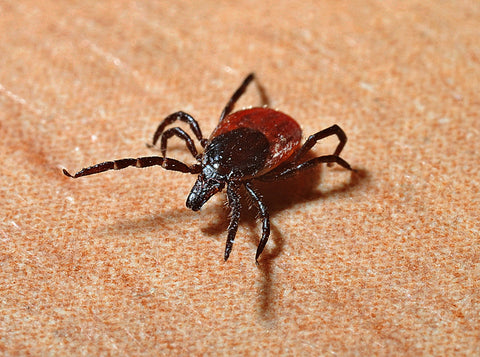 No one can avoid the tick parasite. Ticks are widespread throughout the world. Populations vary from country to country. In Germany, tick maps are available, which indicate the prevalence and risk of infection. If your dog is increasingly nibbling between his toes, his limbs, and between the thighs of his hind legs with his front teeth, he may have discovered a tick.
No one can avoid the tick parasite. Ticks are widespread throughout the world. Populations vary from country to country. In Germany, tick maps are available, which indicate the prevalence and risk of infection. If your dog is increasingly nibbling between his toes, his limbs, and between the thighs of his hind legs with his front teeth, he may have discovered a tick.
You certainly want to prevent a tick bite through adequate preventative measures (spray, collar, spot-on). These methods are not 100% effective. You must check your dog thoroughly after every walk. With short-haired and light-colored dogs, you have the advantage of being able to see these arachnids crawling on the fur. Remove them before they can bite. With long-haired and dark-colored dogs, it is a little more difficult. Feel your four-legged friend thoroughly, especially around the head area (nose, ears), chest, thighs, and skin folds. After checking, you can lightly rub the fur with a white towel. This will help you catch any parasites that have not yet found their way into the fur.
If you find a tick that has already bitten, you can remove it with
- Tick tweezers
- tweezers
- Tick card
- Tick hook
Never use oil or glue. These substances activate the tick's secretion. Place the tool just above the dog's skin, do not squeeze the tick's body, and pull the tick out. Do not twist when using tweezers or tick pliers. Then examine the area thoroughly to ensure that the entire tick (proboscis, head) has been removed. Carefully remove any remains with tweezers. Finally, disinfect the area with the Silver Aid* and treat it with the Insect Stick* . Viruses are not transmitted immediately after a tick bite. The period from the bite to possible pathogen transmission is at least 24 hours.
A visit to the veterinarian is only necessary if a patch of skin becomes inflamed (tick residue). If a circular red spot develops after some time (suspected Lyme disease) or the animal suddenly becomes very ill (suspected barbesiosis), you should also seek the help of your veterinarian. Discuss your suspicions directly; especially in cases of barbesiosis, action must be taken very quickly.
Text by Balance Cure Tierheilpraxis & Textbroker / Pamina 2
Photos by Pixabay
This text contains affiliate links (*)
Through these links, we recommend certain products and may earn a commission. The products don't cost any more, we promise.
If you would like to be regularly informed about new blog articles, simply sign up for our newsletter below!



